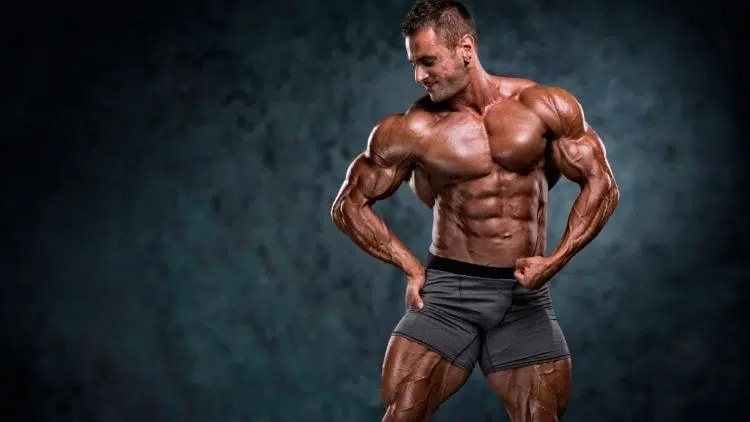Hi, I’m Steve,
Weight training is better for muscle gain than bodyweight exercises. That’s because you are able to progressively overload the muscle with weights. With bodyweight, you are limited in this ability.
Weight training equipment also allows you to exercise your muscles in a way that loads them through a full range of biomechanical motion. You cannot do this for most body parts with bodyweight exercises.
The reality, however, is that you should selectively include some bodyweight exercises in your workout program for muscle gain. It doesn’t have to be one or the other.
In this article, I’ll delve into the bodyweight versus weights for muscle gain debate. I’ll then lay out the case for combining the two based on my decades-long experience of helping my personal trainer clients pack on solid muscle mass.
What it Takes to Build Muscle
Your body is designed to adapt to stress. When it faces a challenging situation, processes take place to better meet that challenge in the future.
Hypertrophy, or enlargement, of your muscle fibers, is how the body responds to muscular stress. When you place a load on the muscle that it is not used to, that stress can cause muscle fiber damage in the form of microtears. When the stress is over, the body is able to repair the fiber and add a tiny bit of size in order to better meet that load next time.
This process of hypertrophy will only happen if you are providing it with the nutrients which are the building blocks of muscle tissue. That means consuming amino acids in the form of protein. If you don’t give your body enough protein, the adaptive process cannot take place.
But there is another factor that is required for continued muscle growth. That is progressive resistance. If you continue to use the same load when working a muscle, it will soon adapt to that level of stress. At that point, the adaptive process will stop.
Bodyweight Training and Muscle Growth
Bodyweight training is more correctly known as calisthenics. Calisthenics is a Greek word and is a contraction of kalos (beauty) and sthenos (strength). This beauty strength training is achieved with your body weight along with the odd extra piece of equipment, such as a pullup bar.
Bodyweight training makes use of your body as the main training resistance. There are two things you can do with your body – you can pull in towards the body or you can push away from the body.
Most bodyweight programs, including those you would have done at school, are weighted towards push training. The classic example, of course, is the push-up.
Even though your body is going to be your primary tool for bodyweight training, if you are doing your bodyweight workout at home, you will also be making use of various pieces of everyday furniture to complete your training session.
Typically, this will include a door frame for doing pull-ups, and a chair for step ups and bench dips. You need to make sure that these pieces of equipment are well secured and stable to ensure your absolute safety when exercising.
Bodyweight training is not a hypertrophy (muscle building) focused means of exercise, although you certainly can build muscle with calisthenics (just take a look at the physiques of gymnasts!)
Rather, the training focus of bodyweight training is to improve strength, flexibility, and speed. In addition, calisthenics will burn some serious calories so that you can burn off body fat. This is especially the case when you perform your calisthenics in circuit training fashion.
A lot of people have the view that bodyweight training is like riding a bike with training wheels. It’s what you do before you advance to ‘real’ workouts with barbells and dumbbells.

